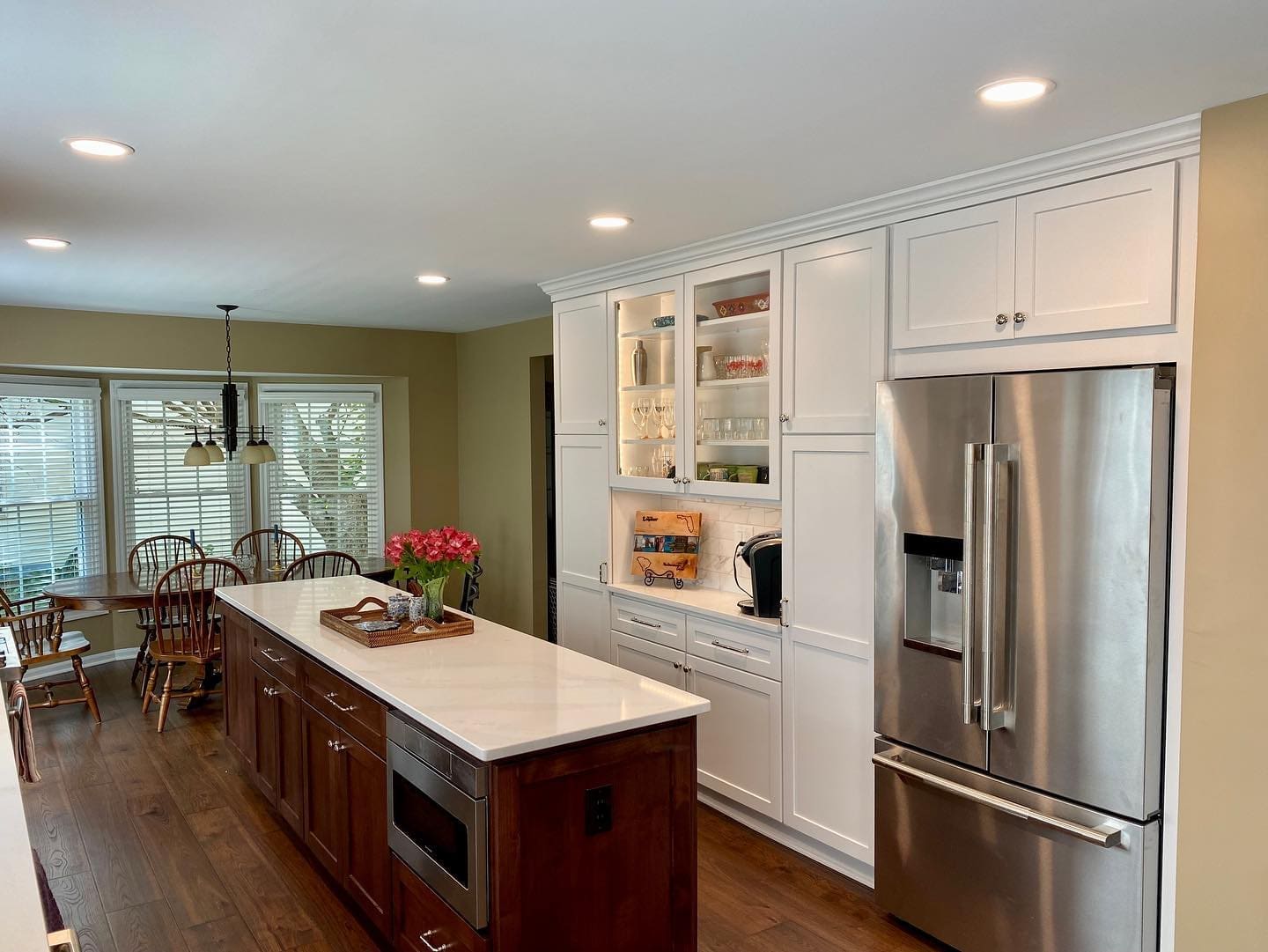 The popular movement toward creating a white kitchen space may be considered a return to the roots of Depression Era decorating or it may be touted as a universal acceptance of what typically defined a contemporary kitchen. Either argument has its merits, but the likelihood of ‘neither’ may be an acceptable means to decipher the present trend. Over the past few decades, the homeowner’s choice to furbish and decorate their kitchen seemed almost apologetic as such fixtures and furnishings that were available in white were the most cost-effective means to address the kitchen décor and style. It was thereby attributed to basic economics and not of choice.
The popular movement toward creating a white kitchen space may be considered a return to the roots of Depression Era decorating or it may be touted as a universal acceptance of what typically defined a contemporary kitchen. Either argument has its merits, but the likelihood of ‘neither’ may be an acceptable means to decipher the present trend. Over the past few decades, the homeowner’s choice to furbish and decorate their kitchen seemed almost apologetic as such fixtures and furnishings that were available in white were the most cost-effective means to address the kitchen décor and style. It was thereby attributed to basic economics and not of choice.
This, however, is not the motivating factor that is driving the trend which is unfolding in the kitchen design community right now, as we speak. The design and creation of kitchen spaces which are dominant in a white theme are quite intentional, very stately, and are drawing a broad and universal appeal in a broad range of homes and exquisite living spaces.
How Technology Contributes to the Popularity
Any Grandmother would likely share a tale with regards to the amount of bleach and lye that she had to use in order to keep her white kitchen spotless; and, given the finishes of the materials and cleaners of that era, she’s probably being quite forthright in her explanation. The counter, cabinet and appliance finishes were quite easily soiled and, in many cases, were eager to support mildew growth. Wood flooring or linoleum flooring, again of that era, were typical finishes in kitchens and were a bear to keep up with–again, given the finishes and maintenance products of that era.
Today’s finishes, relative to the high-use, high-traffic demands of flooring, appliances, countertops and cabinetry, are extremely durable and easy to maintain. While a white surface will be quick to trace some manner of activity (fingerprint, footprint, spill), the new types of finishes enable an incredibly easy clean-up process. Without the shadow or threat of a tedious cleaning regimen, white finishes suddenly become more acceptable, more desired and more viable in an active kitchen. Now that a designer or homeowner realizes that this ‘color theme’ is as easy to keep up with as any other color theme, the choice becomes clearly brighter: white.
Probable Source of Design Influence
It may not be all that necessary to determine the precise movement which spawned the trend toward white kitchen spaces, but it may be interesting to understand a probable influence to determine why it may appeal to you.
The advent and commercially successful introduction of stainless steel finishes on kitchen appliances was a strong influence upon the movement toward white kitchens. Although it appears as a contrasting decorating decision, the stainless appliances add a clarity and sophistication when used in a kitchen that is dominantly white; and add a stark level of interest rather than attempting to coordinate with white appliances. Not only that, but there is an equally strong movement toward ‘commercial looking’ kitchen spaces. In pairing the stainless, with white cabinetry, countertops and tile backsplashes, the commercial kitchen effect is clearly the dominant statement being made here.
Tips on How to ‘Ground’ a Dominantly White Kitchen Space
One of the trickiest tasks associated with the creation and design of the white kitchen is that of integrating a ‘grounding’ element into that kitchen space. When dealing with a color scheme that is pure, yet monochromatic, and so heavily influenced by natural lighting it remains vital to visually ‘ground’ or, create texture and foundation, in an effort to contain the brightness or sanitary effect that a dominantly white kitchen can communicate.
One area which needs to be addressed is the kitchen backsplash. Even if, for example, that white subway tile is the finish of choice—integrate a narrow course (1”) of sea glass or comparable colored glass mosaic which will serve to divide the expanse of white cabinetry, backsplash and countertop. Small stainless (or brightly colored) small appliances may also serve to provide a visual break when stationed against the backsplash.
Flooring and ceilings are a terrific and practical means of providing a visual closure and grounding to the white kitchen. Flooring, for practical reasons, may be better suited in an earth tone or taupe finish which adds a foundation to the white decorating elements and also provides a more tolerable color to maintain. Ceilings may still be white, but if there’s a chance to enhance these expanses by accenting them with a tray effect, embossed texture, or interrupt the visual with creative lighting fixtures, then the white is more subdued and grounding is created.
The last suggestion, and likely the easiest to accomplish, is to address the space with modular accents and window treatments which permit the casual introduction of color. Being a transient method of treatment, these little amenities can be swapped-out in lieu of other colors or fabrics to give your white kitchen the style longevity it deserves.












